|
|
Super Breakout
|
Name:
|
Space Invaders |
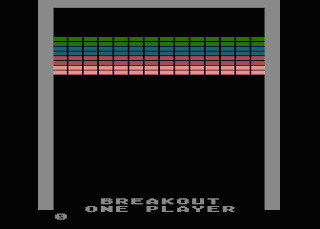 |
| Company: | Atari | |
|
Model #:
|
CX-5203 | |
|
Programmers:
|
Atari 8-Bit Version: Larry Kaplan
(Programmer) & Alan Murphy (Graphics) Atari 5200 Port: Alan Moss Sr. (Programmer) & Jerome Domurat (Graphical Improvements) |
|
| Year: | 1982 | |
|
Released?
|
Yes |
|
| Notes: |
Port of the
1976 Atari Coin-Op |
Breakout was a smash hit for Atari when it debuted in the
arcades in 1976. The idea for Breakout came about when
Nolan Bushnell, Atariís founder, wanted to create a one player
version of their hit Pong game. He turned to Steve Bristow
who sketched out the concept and turned it into a workable
idea. It was then up to future Apple co-founders Steve
Jobs and Steve Wozniak to actually create a working prototype of
the game. When Steve delivered the prototype board to
Atari they couldnít understand his design as he had made it
using as few chips as possible. Not only was his design
too hard to understand, it was also too hard to manufacture, so
Atari ended up redesigning the board and increasing the chip
count from 42 to about 100. Steve later used what he
learned about designing Breakout to add features to the new
Apple II computer he was designing. But of course that
project never went anywhereÖ
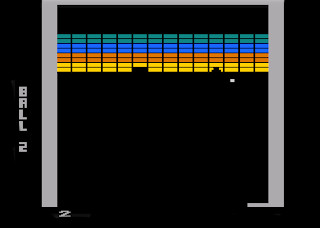
As Breakout was such a hit, plans for a sequel were immediately set in motion. This took the form of Super Breakout, which was released in 1978. Super Breakout included three different modes that the player could select: Double allows the player to control two paddles at once (one placed above the other) and features two balls in play at once. Cavity features two balls trapped in pockets inside the middle of the board which can be used once freed. Finally, Progressive features a wall that constantly moves downward and increases in speed the longer the player lasts. These three modes added some much needed variety Breakout and kept the game fresh long past its expiration date.
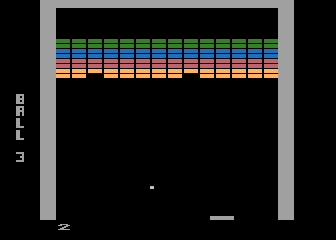
Super Breakout received its first port to the Atari 400/800 in 1979 and then to the Atari 2600 in late 1981. Although simple, these ports really brought the arcade game to players and enjoyed a good bit of popularity at the time. The Atari 400/800 version could even support four players using two sets of paddles for those wild Breakout parties that were all the rage in the late 70ís. After a while, Super Breakout was forgotten as people moved onto the next big gaming craze. That is until 1982 when Super Breakout was suddenly resurrected and included as the pack-in game for Atariís new state of the art 5200 game system. Why would Atari include such a dated game to show off the features of their new advanced gaming system? No one really knows, but Atari needed a game that supported four players as the 5200 came with four controller ports, and they needed something to take the place of their Asteroids port which was discovered to not play nicely with the new analog controllers. Super Breakout fit the bill so it was packed into every 5200 system and children everywhere were extremely disappointed. This isnít to say that Super Breakout was a bad game, it just didnít show off any of the new 5200ís superior features.
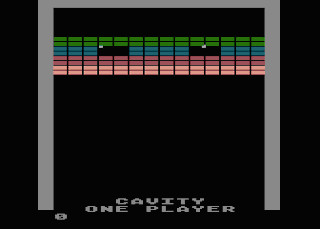
Much like with Space Invaders, the Atari 5200 port of Super Breakout was based on the 400/800 code. However unlike Space Invaders the majority of the game wasnít changed, it was just mildly enhanced. The first, and arguably the biggest, change is that the playfield was increased. That is to say the height of the board was increased so the player had more space to play with and everything didnít feel quite as cramped. The next change was to the colors. The Atari 400/800ís brick colors were a bit dull and muted, while the Atari 5200ís colors were bright and more appealing. Finally some sound and graphics tweaks were made including replacing most of the sound effects and adding a Ďmeltingí animation when a brick was hit (they simply disappeared in the 400/800 version). This was the extent of the changes as thereís only so much you can do with Breakout.
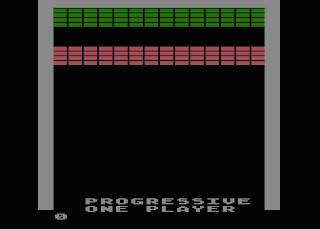
Although Super Breakout doesnít (excuse the pun), break any new ground on the 5200, itís a perfectly serviceable port of the game. In fact the Atari 5200ís analog controllers almost perfectly mimic the paddles used in the original game (almost), meaning that players didnít have to go hunting down and plug in a different controller when they wanted to play. Unfortunately Super Breakout was quite long in the tooth when the 5200 rolled around and didnít impress anyone who bought the system like Combat had on the 2600. Atariís blunder with the pack-in game wasnít the good first impression they were hoping for.
| Version | Cart Text | Description |
| ?/??/82 | Super Breakout Cartridge |
Final version |
